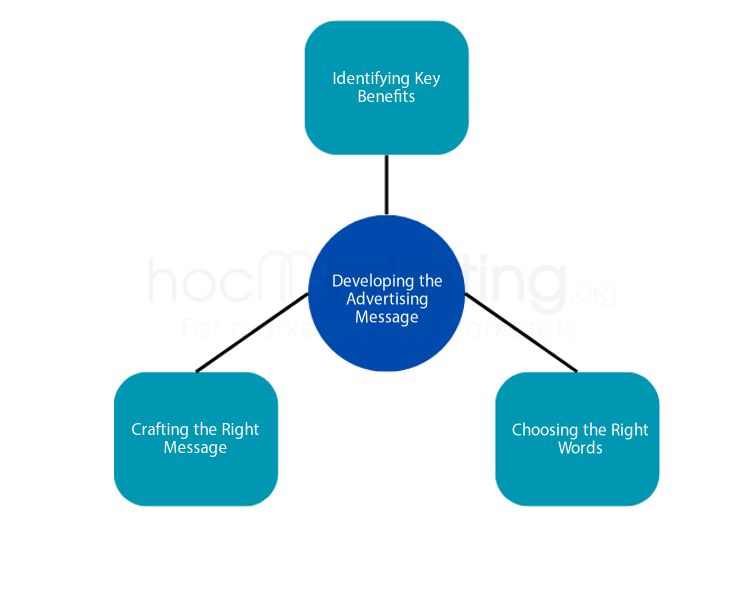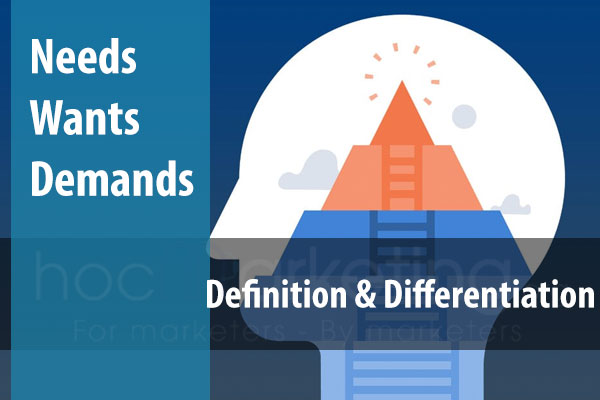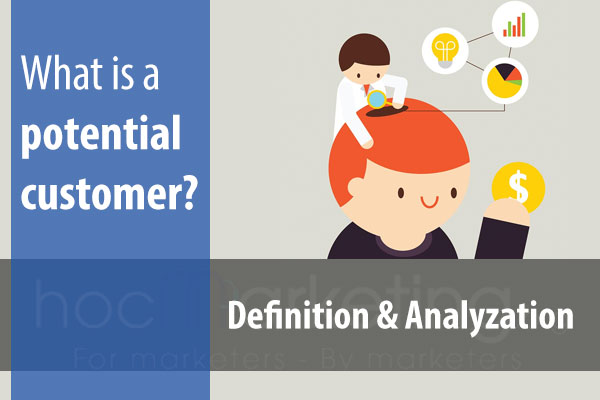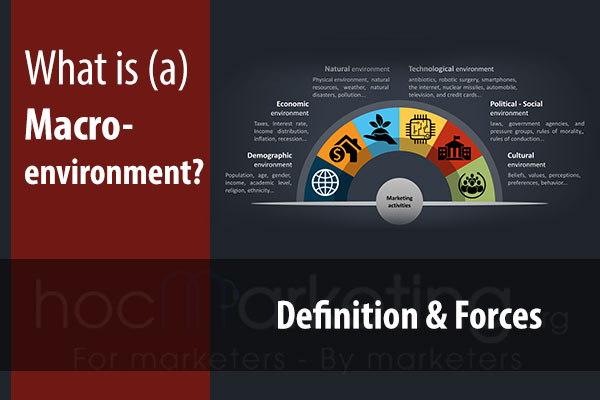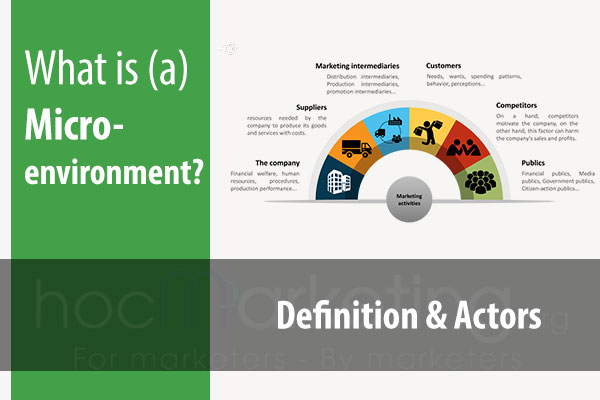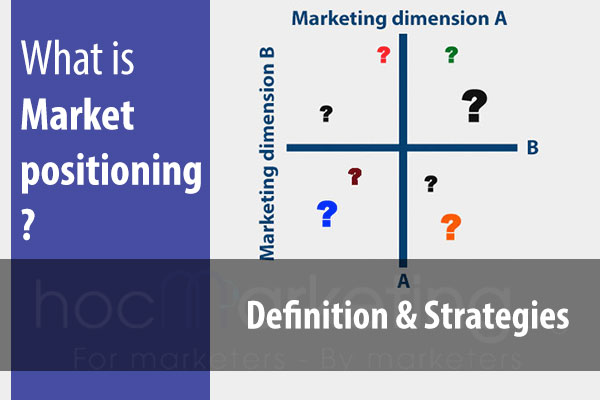
What is the advertising message? Guidelines for designing advertising messages

Maximize the impact of your advertising with these guidelines for designing effective advertising messages. Learn how to identify key benefits, craft the perfect message, choose visuals and colors, and measure effectiveness through metrics and feedback.
Welcome to this blog post on designing effective advertising messages. In today's competitive marketplace, it is crucial for businesses to create messages that not only capture the attention of their target audience but also convey the right message. The key is to develop an advertising message that resonates with your audience and motivates them to take action. This post will provide you with guidelines and tips for creating advertising messages that are impactful and effective. So, let's dive into the world of advertising messages and explore how to create compelling messages that leave a lasting impression.
1. What is the advertising message?
The advertising message is the central idea or theme that a brand wants to communicate to its target audience through an advertising campaign. It is the message that will persuade the audience to take a specific action, such as buying a product or service, visiting a website, or signing up for a newsletter. A well-crafted advertising message can capture the attention of the audience, create a desire for the product or service, and generate brand awareness. In this article, we will explore the importance of advertising messages and provide guidelines for designing effective ones. We will cover topics such as identifying key benefits, crafting the right message, selecting the right words, using visuals effectively, incorporating brand elements, testing the message, refining it, implementing it, and measuring its effectiveness. By following these guidelines, businesses can create advertising messages that resonate with their target audience and drive results.
2. The Importance of Advertising Messages
Advertising messages play a critical role in the success of any marketing campaign. They are designed to capture the attention of prospective customers and motivate them to take action. Without effective advertising messages, businesses would struggle to attract new customers, promote their products or services, and ultimately generate revenue. The importance of advertising messages lies in their ability to communicate value proposition and differentiate a business from its competitors. They help establish brand identity and build trust with potential customers. In today's highly competitive marketplace, creating effective advertising messages is more important than ever before.
3. Developing the Advertising Message
Developing an effective advertising message requires a thorough understanding of the target audience and their needs, as well as a clear understanding of the product or service being promoted. The process typically involves identifying the key benefits of the product or service and crafting a message that will resonate with the target audience. This is often done through market research, which can help identify what motivates the target audience and what messaging will be most effective.
Crafting the right message involves finding the right tone and language that will appeal to the target audience. This can involve using emotional appeals, such as humor or nostalgia, or more rational appeals based on product features or benefits. Choosing the right words is also important, as the message needs to be clear, concise, and memorable.
Once the message is developed, it is important to design it in a way that will be visually appealing and memorable. This can involve the use of visuals, such as images or videos, as well as selecting the right colors and incorporating brand elements. Testing the message through focus groups, surveys, and feedback can help refine the message and ensure that it is resonating with the target audience.
Refining the message based on feedback and analysis of results is key to developing an effective advertising campaign. Making adjustments to the message based on feedback from the target audience can help ensure that the campaign is successful. Finally, implementing the message through the right medium, timing, and frequency can help ensure that it reaches the target audience and has the desired impact.
Identifying the Key Benefits
Identifying the key benefits is a crucial step in creating an effective advertising message. In this section, we will explore the process of identifying the benefits that are most important to your target audience. The key benefits are the unique selling points that make your product or service stand out from the competition. To identify these benefits, you need to understand your target audience and their needs.
Start by defining your target audience and creating customer personas. This will help you understand their demographics, psychographics, and behavior patterns. Once you have a clear understanding of your target audience, you can identify the benefits that will resonate with them the most.
Think about the problems your product or service solves for your target audience. What pain points does it address? What needs does it fulfill? Use this information to identify the key benefits that your target audience values the most.
It is also important to consider the benefits that differentiate your product or service from the competition. What makes your product or service unique? How does it solve the problems of your target audience differently than your competitors? By identifying these unique selling points, you can create a message that sets your product or service apart from the competition.
Once you have identified the key benefits, you can use them to craft a message that resonates with your target audience. The message should be clear, concise, and focused on the benefits that are most important to your target audience. By understanding your target audience and identifying the key benefits, you can create an advertising message that effectively communicates the value of your product or service.
Crafting the Right Message
Crafting the right message is one of the most crucial steps in developing an effective advertising campaign. It involves creating a message that resonates with the target audience and motivates them to take action. To craft the right message, it is essential to start by understanding the needs and desires of the target audience and how the product or service can address those needs. The message should be clear, concise, and easy to understand while also being persuasive and compelling.
One approach to crafting the right message is to focus on the unique selling proposition (USP) of the product or service. The USP is the key benefit that sets the product or service apart from its competitors. By highlighting the USP in the advertising message, it can help differentiate the product and make it more attractive to the target audience.
Another approach is to focus on the emotional benefits that the product or service provides. This can be achieved by tapping into the target audience's emotions and creating an emotional connection between the product and the audience. Emotional benefits can include feelings of happiness, love, security, and self-esteem, among others. By focusing on emotional benefits, the advertising message can create a stronger bond between the target audience and the product, leading to increased engagement and loyalty.
Ultimately, crafting the right message requires a deep understanding of the target audience and their needs and desires. It involves identifying the key benefits of the product or service, crafting a clear and compelling message, and using language and visuals that resonate with the target audience. By taking the time to craft the right message, advertisers can create more effective campaigns that drive results and achieve their marketing objectives.
Choosing the Right Words
Choosing the right words is a critical aspect of developing an effective advertising message. The language used in advertising can have a significant impact on the target audience's perception of the product or service being promoted. When selecting words, it's important to consider the audience's demographics, needs, and preferences. The language used should be clear, concise, and persuasive.
Words that are too technical or complex may confuse or intimidate the audience, while overly simplistic language may come across as patronizing or condescending. The tone of the message should also be considered. Is it playful, serious, or informative? The words used should reflect the intended tone.
Another important consideration when choosing words is the use of emotional appeal. Studies have shown that advertising messages that tap into emotions are more effective than those that rely solely on rational appeals. Words that evoke feelings of excitement, joy, fear, or urgency can be powerful motivators for action. However, it's important to use emotional appeal ethically and avoid manipulating the audience's emotions for the sake of making a sale.
In addition to the language used, the placement of words within the message is also important. The most critical information should be placed at the beginning and end of the message, as these are the parts that are most likely to be remembered. Additionally, the use of action-oriented words such as "buy," "act now," or "try" can create a sense of urgency and encourage the audience to take action.
Overall, the words used in an advertising message should be carefully chosen to create a clear, persuasive, and emotionally appealing message that resonates with the target audience.
4. Designing the Advertising Message
Designing the Advertising Message involves creating visual and textual elements that will effectively communicate the message to the target audience. This stage of advertising message development is crucial in achieving the desired results and requires careful consideration of visual elements, color schemes, and brand elements. By using visuals effectively, advertisers can create a powerful emotional response, making the message more memorable. Selecting the right colors can also help create a positive emotional response and enhance the message's effectiveness.
Incorporating brand elements such as logos, taglines, and other brand identifiers can also help reinforce the brand image and create a sense of familiarity with the audience. Advertisers should aim to strike a balance between the visual and textual elements to create a cohesive and compelling message that resonates with the target audience. Furthermore, the advertising message should be designed to be easily digestible and memorable, ensuring that the audience is left with a lasting impression.
Overall, designing the advertising message requires a mix of creativity, knowledge of the target audience, and an understanding of the brand's unique selling proposition. By incorporating the right visual and textual elements, advertisers can create a message that is not only effective but also memorable and impactful.
Using Visuals Effectively
Visuals play a crucial role in designing an effective advertising message. They can instantly grab the attention of the target audience and communicate the intended message effectively. The use of visuals in advertising can range from images, videos, to animations. However, it is important to use them judiciously to avoid overwhelming the audience or distracting them from the main message.
One way to use visuals effectively is by ensuring they are relevant to the message being communicated. For instance, if the message is about a new car model, the visuals should showcase the car's features and benefits. This will help the audience to visualize themselves in the car and connect emotionally with the message.
Another way to use visuals effectively is by ensuring they are of high quality. Poor quality visuals can negatively impact the message's credibility and distract the audience from the main message. Therefore, it is important to use high-resolution images and videos that are clear and visually appealing.
Using visuals that are consistent with the brand's identity is also crucial. This helps in creating a strong brand identity and making the message memorable. For instance, if the brand's colors are blue and white, the visuals should incorporate these colors to create a consistent brand image.
Lastly, it is important to use visuals that are attention-grabbing. This can be achieved by using bold and contrasting colors, unique angles, or creative visuals that are not commonly used in advertising. The goal is to create visuals that will make the audience stop and take notice of the message being communicated.
In summary, visuals are an important aspect of designing an effective advertising message. They should be relevant, of high quality, consistent with the brand's identity, and attention-grabbing. By using visuals effectively, advertisers can create messages that resonate with their target audience and drive the desired response.
Selecting the Right Colors
When designing an advertising message, selecting the right colors is an essential aspect of the process. Colors can evoke certain emotions and associations, and can even influence consumer behavior. For example, red can signify passion, excitement, or urgency, while blue can convey trust, professionalism, or calmness. Therefore, it is crucial to choose colors that align with the brand's message and target audience.
One consideration when selecting colors is the brand's existing color scheme. If the brand already has established colors, the advertising message should complement and enhance those colors rather than clash with them. Another factor to consider is the industry in which the brand operates. Different industries may have different color associations and expectations. For example, the healthcare industry may use more calming and soothing colors, while the entertainment industry may use bold and vibrant colors.
The target audience should also be taken into account when selecting colors. Age, gender, and cultural background can all influence color preferences and associations. For example, younger audiences may prefer brighter and more playful colors, while older audiences may prefer more subdued and classic colors.
When designing the advertising message, it is also important to consider the context in which it will be viewed. Colors can appear differently on various mediums and devices, so it is crucial to test the colors on the intended medium and adjust accordingly.
In summary, selecting the right colors is a crucial aspect of designing an effective advertising message. It is important to consider the brand's existing color scheme, industry expectations, target audience preferences, and the context in which the message will be viewed.
Incorporating Brand Elements
Incorporating brand elements into the advertising message is crucial for creating a strong brand identity and increasing brand recognition. Brand elements can include logos, slogans, taglines, brand colors, and other visual and auditory cues that are unique to the brand. These elements help to differentiate the brand from its competitors and create a lasting impression on the audience.
When designing the advertising message, it is important to ensure that the brand elements are consistent and visually appealing. The logo should be prominently displayed and easily recognizable, while the slogan or tagline should effectively communicate the brand's key message. The use of brand colors can also help to reinforce the brand's identity and create a sense of familiarity with the audience.
In addition to visual elements, incorporating auditory cues such as jingles or sound effects can also help to reinforce the brand's identity and create a memorable experience for the audience. However, it is important to ensure that these elements are not overused or intrusive, as this can detract from the overall effectiveness of the message.
Overall, incorporating brand elements into the advertising message is essential for creating a strong and memorable brand identity. By ensuring that the elements are consistent, visually appealing, and effectively communicate the brand's key message, the advertising message can help to increase brand recognition and differentiate the brand from its competitors.
5. Testing the Advertising Message
Before launching an advertising campaign, it is important to test the advertising message to ensure it resonates with the target audience. There are several methods for testing the effectiveness of an advertising message. One common method is to conduct focus groups, where a small group of people from the target audience are brought together to discuss the advertising message. The discussion is moderated by a professional researcher who asks questions and encourages participants to share their opinions and feelings about the message.
Another method for testing the advertising message is through surveys and feedback. Surveys can be conducted online or in person and can provide valuable insights into how the target audience perceives the message. Feedback can also be collected through social media, customer service channels, or other methods of communication.
Once the testing is complete, it is important to analyze the results. This can involve reviewing the feedback and survey responses, as well as observing the behavior of the target audience in response to the advertising message. Based on the analysis, adjustments may need to be made to the message to ensure it is effective in achieving the desired objectives.
Ultimately, testing the advertising message is critical to the success of any advertising campaign. By refining the message based on feedback and analysis, advertisers can ensure that their message resonates with the target audience and achieves the desired objectives.
Focus Groups
Focus groups are a crucial part of testing the effectiveness of an advertising message. It involves a group of individuals who are selected based on their demographics and are asked to provide their opinions and thoughts on the advertising message. The objective of focus groups is to understand how the target audience perceives the message and to identify any areas that need improvement.
During a focus group session, participants are asked a series of questions about the advertising message such as what they liked or disliked about it, what emotions it triggered, and whether it was memorable or not. The feedback obtained from focus groups is used to refine the advertising message and make it more effective.
It is important to note that focus groups should be conducted in a controlled environment to ensure that the feedback obtained is accurate and unbiased. The moderator should also be trained to ask open-ended questions and to encourage participation from all participants.
In addition to focus groups, surveys and feedback can also be used to test the effectiveness of an advertising message. Surveys can be distributed to a larger audience and can provide quantitative data on the message's effectiveness. Feedback can also be obtained through social media platforms and online reviews.
Overall, focus groups provide valuable insights into the perception of an advertising message and can help refine and improve it.
Surveys and Feedback
One effective way to test the advertising message is by gathering feedback from the target audience through surveys. Surveys can be conducted online, over the phone, or in person. The questions should be designed to measure the audience's understanding of the message, their reaction to it, and their likelihood to take action. Open-ended questions can also provide valuable insights into how the message is being perceived and what improvements can be made.
Another way to gather feedback is through focus groups. Focus groups are small groups of people who are representative of the target audience and are brought together to provide feedback on the advertising message. The discussion is moderated and can provide valuable insights into how the message is being received and what changes can be made to improve its effectiveness.
Once feedback has been gathered, it is important to analyze the results and make adjustments to the advertising message as necessary. This may include making changes to the message itself, the visuals used, or the medium through which it is being distributed. By continuously refining the advertising message based on feedback and analysis, advertisers can ensure that their message is effective in reaching and resonating with the target audience.
6. Refining the Advertising Message
After crafting the initial advertising message, it is essential to refine it to ensure that it effectively resonates with the target audience. The refinement process involves analyzing the results obtained from testing the message and making adjustments to improve its effectiveness. This section will explore the steps involved in refining the advertising message.
Analyzing the results of the message testing is the first step in refining the advertising message. The feedback obtained from focus groups, surveys, and other forms of audience research provides valuable insights into how the message is perceived. Analyzing the feedback helps to identify the strengths and weaknesses of the message, as well as areas that require improvement.
The second step involves making adjustments to the advertising message based on the feedback obtained. This involves changing the message's content or structure to better align with the target audience's needs and preferences. The adjustments made should aim to improve the message's effectiveness and ensure that it resonates with the target audience.
It is essential to test the refined message to determine whether the adjustments made are effective. This testing process helps to identify any further areas that require refinement and ensures that the message effectively resonates with the target audience.
The refinement process is an ongoing process that requires continuous analysis and adjustment. It is crucial to keep refining the message until it achieves its intended purpose and effectively resonates with the target audience.
In conclusion, refining the advertising message is a crucial step in ensuring that it effectively resonates with the target audience. The refinement process involves analyzing the results obtained from testing the message, making adjustments, and continuously testing until the message achieves its intended purpose.
Analyzing the Results
After testing the advertising message, the next step is to analyze the results in order to determine its effectiveness. This involves measuring the impact of the message on the target audience and evaluating its ability to achieve the desired objectives.
One way to analyze the results is to compare the pre-test and post-test responses of the target audience. This can be done through surveys or focus groups that measure the audience's awareness, attitudes, and behaviors before and after exposure to the advertising message. By comparing these results, marketers can determine whether the message had a positive or negative impact on the audience and whether it achieved the desired objectives.
Another way to analyze the results is to track the metrics that were set during the development of the advertising message. These metrics can include measures such as click-through rates, conversion rates, and sales figures. By tracking these metrics, marketers can determine whether the message is driving the desired actions and whether it is generating a positive return on investment.
Once the results have been analyzed, adjustments can be made to refine the advertising message. This can involve tweaking the message itself, adjusting the timing or frequency of the message, or changing the medium through which the message is delivered. By refining the message based on the results, marketers can improve its effectiveness and ensure that it is achieving the desired objectives.
Making Adjustments
After analyzing the results of testing the advertising message, it is important to make adjustments to improve its effectiveness. This may involve tweaking the messaging, visuals, or even the chosen medium. It is essential to carefully consider the feedback received and use it to inform any necessary changes.
One approach to making adjustments is to use A/B testing, where two versions of the advertising message are shown to different groups and their responses are compared. This can help determine which elements are most effective and guide any necessary changes. It is also important to continuously monitor the effectiveness of the advertising message and make adjustments as needed to ensure it is resonating with the target audience and achieving the desired results.
Another key factor in making adjustments is to stay true to the brand's identity and messaging. Any changes made should align with the overall brand strategy and messaging, and not deviate too far from what the brand stands for.
Ultimately, making adjustments to the advertising message is a crucial step in the process of creating an effective campaign. By carefully analyzing feedback and using data to guide changes, brands can ensure that their messaging is resonating with consumers and driving the desired results.
7. Implementing the Advertising Message
Implementing the Advertising Message requires a well-thought-out plan that involves choosing the right medium, timing, and frequency of the message. The right medium for advertising depends on the target audience and the type of message being conveyed. Advertising messages can be delivered through various media such as TV, radio, print, outdoor, online, and social media. Each medium has its own advantages and disadvantages, and it is important to choose the one that aligns with the marketing objectives and budget.
Timing is also an essential factor to consider when implementing the advertising message. The timing of the message should be in sync with the target audience's behavior and the marketing objective. For example, if the objective is to promote a summer product, it makes sense to advertise it when people are more likely to engage with summer activities. Similarly, if the target audience consists of working professionals, it makes sense to advertise during the weekdays when they are more likely to engage with the media.
Frequency is another crucial factor when implementing the advertising message. The frequency of the message should be determined by the marketing objective, budget, and the medium used to deliver the message. For example, TV advertising requires higher frequency compared to print advertising as the message is more likely to be forgotten or ignored. On the other hand, social media advertising requires less frequency as the message can be easily shared and viewed repeatedly.
In conclusion, implementing the advertising message requires a well-planned strategy that considers the right medium, timing, and frequency. The right medium should align with the target audience and marketing objectives. Timing should be in sync with the target audience's behavior, and frequency should be determined by the medium and budget. A well-executed advertising message can yield higher ROI and contribute to the overall success of the marketing campaign.
Choosing the Right Medium
Choosing the right medium to deliver your advertising message is crucial to its success. Different mediums have different strengths and weaknesses, and choosing the right one depends on several factors, such as your target audience, budget, message complexity, and campaign objectives. Some of the most common advertising mediums include TV, radio, print, outdoor, online, and social media. Each of these mediums has its own unique advantages and limitations. For instance, TV advertising is great for reaching large audiences, but it can be expensive and may not be suitable for niche markets. Print advertising is highly targeted and cost-effective, but it may not be as engaging as other mediums. Choosing the right medium requires careful consideration of these factors and a deep understanding of your target audience's preferences and behaviors. In the next sub-sections, we will discuss each of these mediums in more detail and provide guidelines for choosing the right one for your campaign.
Timing and Frequency
When implementing an advertising message, timing and frequency are crucial factors to consider. It is essential to reach the target audience at the right time and with the right frequency to ensure that the message is received and remembered. Timing refers to the appropriate time to release the advertising message, while frequency refers to how often the message is released.
Timing is important because it can have a significant impact on the effectiveness of the advertising message. For example, if the advertising message is released during a period where the target audience is not active, it may not be seen or heard, and the message may not be effective. Therefore, it is crucial to consider the timing of the message, such as the day of the week, time of day, and season.
Frequency is also vital because it ensures that the advertising message is seen or heard by the target audience multiple times, which helps to increase the message's effectiveness. However, it is essential to find the right balance between too little and too much frequency. If the message is released too often, it may become annoying and lead to the audience ignoring the message.
To determine the appropriate timing and frequency for the advertising message, it is essential to consider the target audience's behavior and habits. For example, if the target audience is primarily active on social media during specific hours, it may be beneficial to release the advertising message during those hours. Additionally, it is crucial to consider the competition's advertising message and the industry's seasonality to determine the best timing and frequency.
In conclusion, timing and frequency are crucial elements to consider when implementing an advertising message. By identifying the appropriate timing and frequency, the message can be more effective and reach the target audience at the right time and with the right frequency.
8. Measuring the Advertising Message's Effectiveness
To ensure that an advertising message is effective, it is essential to measure its impact. This can be done by setting measurable objectives and using metrics to track progress. Metrics such as reach, engagement, and conversions can help determine the effectiveness of an advertising message. It is important to establish baseline metrics before implementing the advertising message so that progress can be accurately measured. Once baseline metrics are established, it is important to track progress regularly and make adjustments as necessary to improve the effectiveness of the advertising message.
In addition to metrics, focus groups and surveys can provide valuable feedback on the advertising message. Focus groups can help determine if the message is resonating with the target audience and if there are any areas that need improvement. Surveys can provide more quantitative data on the effectiveness of the message and help identify areas for improvement.
Analyzing the results of metrics, focus groups, and surveys can help refine the advertising message and make necessary adjustments. This may include changing the message, visuals, or medium used to reach the target audience.
Overall, measuring the effectiveness of an advertising message is essential to ensure that resources are being used effectively and that the message is achieving its intended goals. By setting measurable objectives, using metrics to track progress, and analyzing feedback from focus groups and surveys, advertisers can refine their message and improve its effectiveness.
Setting Measurable Objectives
The success of an advertising message depends on how well it achieves its objectives. Therefore, it is essential to set measurable objectives that can help evaluate the effectiveness of the message. Measurable objectives should be specific, measurable, achievable, relevant, and time-bound. The objectives should be based on the overall marketing goals and should align with the company's mission and vision.
One way to set measurable objectives is to use the SMART framework. SMART stands for Specific, Measurable, Achievable, Relevant, and Time-Bound. Specific objectives clearly define what needs to be achieved. Measurable objectives have a quantifiable metric that can be used to evaluate success. Achievable objectives are realistic and can be accomplished with the available resources. Relevant objectives align with the overall marketing goals. Time-bound objectives have a specific deadline for achievement.
Another way to set measurable objectives is to use the AIDA model. AIDA stands for Attention, Interest, Desire, and Action. The AIDA model helps identify the objective of the advertising message. Attention objectives aim to capture the audience's attention. Interest objectives aim to generate interest in the product or service. Desire objectives aim to create a desire for the product or service. Action objectives aim to encourage the audience to take action, such as making a purchase.
Setting measurable objectives is crucial for evaluating the effectiveness of the advertising message. It helps determine whether the message is achieving its intended goals and provides insight into areas for improvement. By setting measurable objectives, marketers can track progress, make data-driven decisions, and optimize their advertising strategies for greater success.
Using Metrics to Track Progress Tips for Creating Effective Advertising Messages
To determine the effectiveness of an advertising message, it is crucial to use metrics to track progress. Metrics are measurable data points that allow marketers to evaluate the success of their advertising campaigns. By analyzing metrics, marketers can gain valuable insights into how well their messages are resonating with their target audience. Some of the key metrics that marketers use to measure the effectiveness of their advertising messages include reach, engagement, leads, conversions, and sales.
Reach refers to the number of people who have been exposed to an advertising message. This metric can be measured using tools such as Google Analytics, which tracks website traffic and can provide data on the number of unique visitors and page views. Engagement measures how well an audience is interacting with an advertising message. This can include metrics such as likes, shares, comments, and click-through rates. Leads refer to the number of people who have expressed interest in a product or service as a result of the advertising message. Conversions refer to the number of people who have taken a desired action, such as making a purchase or filling out a form. Finally, sales is the ultimate metric that marketers use to measure the success of their advertising messages.
To effectively track progress using metrics, marketers need to set measurable objectives at the beginning of their campaigns. These objectives should be specific, measurable, attainable, relevant, and time-bound. For example, if the objective is to increase sales by 10% within the next three months, the metrics tracked should be focused on sales.
In addition to tracking metrics, marketers can also use A/B testing to refine their advertising messages. A/B testing involves creating two versions of an advertising message, and then testing them with different segments of the target audience. By analyzing the results of the A/B test, marketers can identify which version of the message is more effective, and make adjustments accordingly.
Overall, using metrics to track progress is essential for creating effective advertising messages. By setting measurable objectives and analyzing metrics, marketers can gain valuable insights into how well their advertising campaigns are performing, and make adjustments to improve their effectiveness.
Summary
In conclusion, crafting effective advertising messages is crucial for any business looking to attract and retain customers. By following the guidelines outlined in this post, such as identifying your target audience, highlighting the benefits of your product or service, and using persuasive language and visuals, you can create messages that resonate with your audience and drive conversions. Remember to keep your messaging consistent across all channels and continuously analyze and adjust your approach based on customer feedback and market trends. With these tips in mind, you can create powerful advertising messages that help your business stand out in a crowded marketplace.

